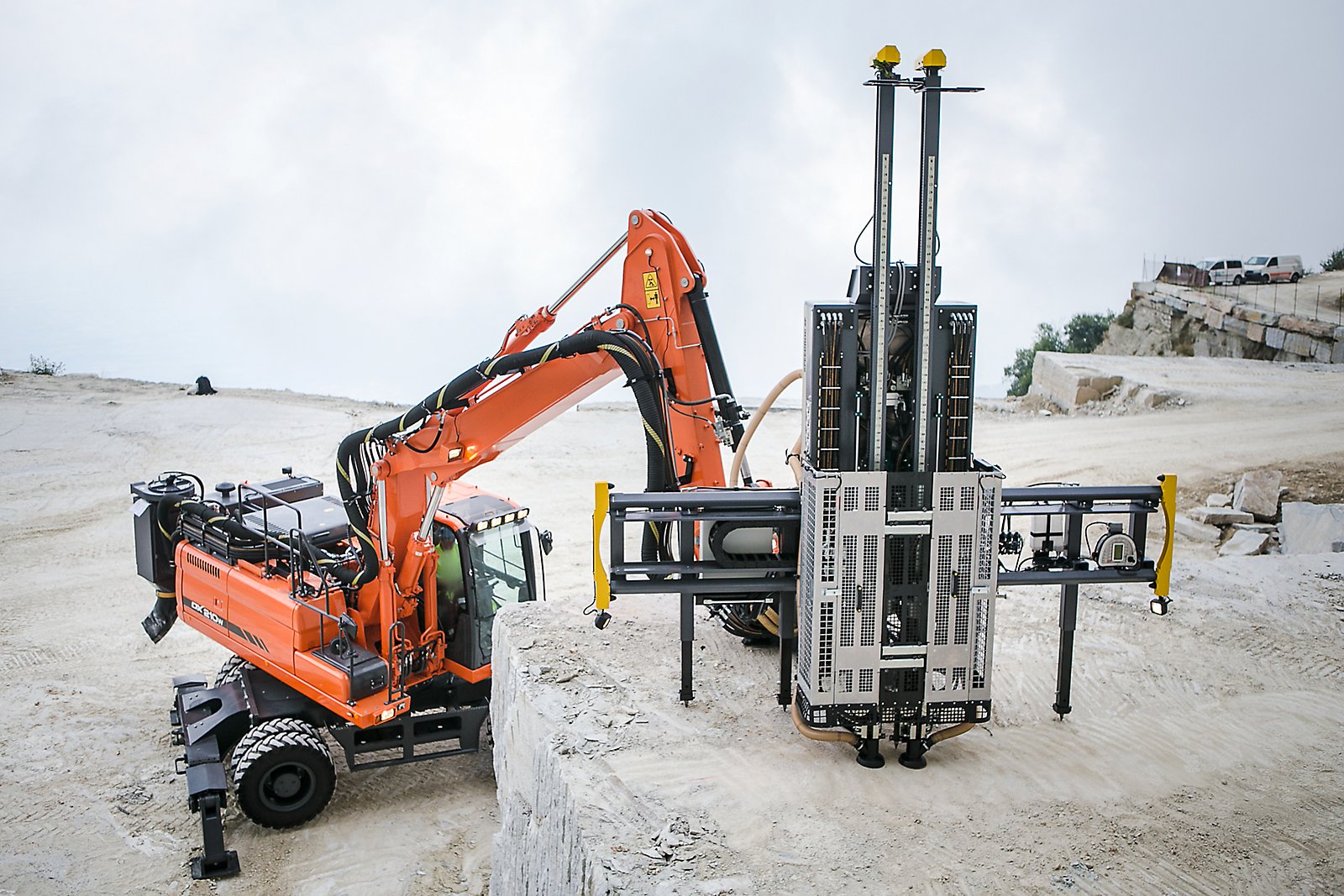Dimension stone is quarried by cutting, or separating by some other means, large blocks of stone from the natural rock mass. The size of individual block produced depends on a number of factors, including the homogeneity of the rock itself, the ability of the quarry operator to handle the rough stone, and the required end use for the stone once it has been shaped. A typical block size might be in the order of 6 m3 (200 ft3), which would relate to a block weight of 10–18 t, depending on the density. The way an individual quarry is operated can vary enormously.
The physical characteristics of the rock mass (how homogeneous it is, and whether there are defined lines of weakness such as regular fracturing or lamination), the size of both the resource and the market for its products, and the financial resources of the operator, all play a role in deciding the quarry design and capacity. In a large-scale operation, the first stage in production is to loosen individual blocks that may contain thousands of cubic meters of material, from quarry benches 10 m or more in height.
Conversely, a small-scale quarry may have a very limited output, produce raw blocks weighing 5–10 t, and have a lower bench height that is suited to available production technology. The overall concept is the same, however: to produce raw blocks that can then be processed into a higher-value product. Looked at in this way, the raw block is a valuable asset in its own right, and has to be handled carefully – small, irregular fragmented blocks are less marketable than large ones. As a result, high-value blocks are treated gently.
For example, some operators use a 'pillow' of soil or sand to support newly loosened raw stone blocks while they are being handled in the quarry. For harder material such as granite or other intrusive rocks, blocks are usually split away from the quarry face by drilling a line of closely spaced, accurately aligned holes, then inserting wedges and shims (sometimes called plugs and feathers) into them. Driving the wedges into the holes sequentially causes the rock to crack along the line of the holes, thus allowing the block to be pried free. Softer rock, such as marble, can be cut with diamond-impregnated wire saws, while blocks of soft (but not crystalline) limestone are often cut out using mechanical saws. Large volumes of materials like slate can be loosened by the careful use of low-energy explosives such as black powder, placed in pre-drilled holes along a quarry bench.
The aim here, of course, is to loosen the raw stone sufficiently without fragmenting it, which would render it useless for roofing-slate or monument manufacture. Small amounts of explosives can also be used to free blocks of harder material from the quarry bench floor. The stone blocks are moved from the quarry to the processing plant using large frontend loaders and flatbed trucks. The rough blocks can then be stored at the quarry as inventory or taken immediately for processing at a fabrication plant; these are often integrated with the quarrying operation, or are located nearby to reduce transport costs.
Raw blocks are put through a series of processing steps, depending upon the end product required. This usually involves the use of wet cutting into precisely dimensioned blocks or thin slabs with diamond-impregnated wires or circular saws, followed – if required – by polishing or honing.
The thickness of individual slabs again depends on the end use, with architectural cladding or commercial paving demanding a thicker section than, for instance, material destined for use as domestic interior floor or wall tiling. Individual quarries are often quite small operations that supply local demand. In addition, dimension stone companies sometimes have several quarries for different stone types or colors that operate intermittently, depending upon the demand for a particular stone. Unusable stone rubble is crushed and sold as construction aggregate.























